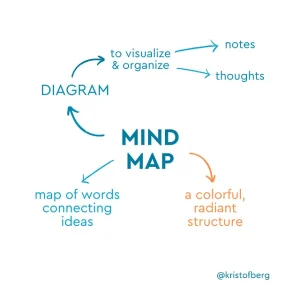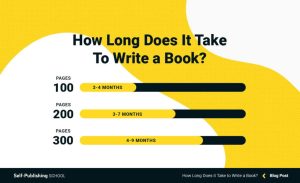How to Write a Book in 12 Steps: A Must-Read Guide for Nonfiction Authors

By learning how to write a book in the nonfiction genre you’ll be able to take your business or career to the next level. The nonfiction genre is a true game changer for professionals and entrepreneurs – it can open new doors, build your reputation, expand your reach, and increase your revenue.
So, why should you get started writing a book right now? If you’ve reached a plateau in your business growth, there’s no better way to break through it than by writing and publishing a nonfiction book to establish yourself as an expert in your industry.
Now, a book writing project for nonfiction authors calls for a different approach than what you’ll find in most Google searches for “how to write a book.” That’s why I decided to create a thorough online guide to specifically help entrepreneurs, small business owners, professionals, practitioners, coaches and other problem-solvers get published.
This guide is designed to help you write a compelling nonfiction book by leveraging the lifetime of experience in your field into a book that will truly move the needle.
So, without further ado, here are the 12 steps to writing a book that will take your business or your career to the next level.
STEP 1: Define Your Book’s Main Idea

The main goal for your book is to openly share your experience with your readers, to give of yourself and your skills to improve their lives or to improve their businesses.
Unfortunately, many writers make the mistake of thinking that they have to guard their intellectual property like Fort Knox, so they write a book that’s sub-standard and only show a glimpse of what they’re truly capable of (or they simply refuse to write a book in the first place!).
What they don’t realize is that when you generously share your personal skills and wisdom with an audience, you’ll get a lot more back from them. This may come in the way of new clients, new opportunities for paid public speaking, new strategic partnerships that open up new markets, free traditional and social media coverage, and many other benefits.
But first, you need to know how to clearly establish your book’s main idea – one that will create a strong connection between you and your readers.
How Do You Define the Main Idea Before You Write a Book?
When it comes to identifying your main idea, your goal is to put yourself in the shoes of your readers, and think:
What’s the one thing, technique, skill, approach, etc. which I know in-depth that would benefit them the most in their lives?
or
What’s the one thing, technique, skill, approach, etc. which I know in-depth that will help them take their businesses to a new level?
Then, make “that” your main idea. This should encompass your unique set of skills but it should be worded from the point of view of the needs of your audience.
The Best Book Main Ideas Solve Problems or Address Challenges
Main ideas that work in the marketplace are always a marriage between what you bring to the table and the deep needs of your readers. You’re in the problem-solving business, and your main idea has to address your audiences’ challenges.
The more you share with them, the more profound the impact you’ll have on their lives, and, more importantly, the more motivated you’ll be to write a book for.
This is why when you start writing a book you will open new doors: your readers will benefit from the wealth of knowledge that you’re sharing with them, but they’ll still require your expertise to help them bring about change. They’ll appreciate your generosity, trust you and reward you with their business.
Start Writing Down Your Book’s Main Idea
So, to come up with your main idea, simply think about the biggest issue that you can help your readers solve with the skills you’ve developed over the years, and then make your main idea the solution to that problem.
At the beginning of the writing process, use your main idea as your working title, even if it sounds a bit long or clunky. When you’re done writing – and only then – you’ll be turning your main idea into a formal book title.
STEP 2: Set a Hard Deadline to Write a Book and Get it Published

Here’s a scary statistic for many writers: 97% of aspiring authors start writing but never finish a book or they do but never get around to publishing it, even after several years of effort.
Now, there are multiple reasons why this happens, but a common one is that they never bothered to set a hard deadline.
And when I say hard deadline, I mean a deadline that’s immovable, a deadline that’s cast in stone.
When you’re a professional book writer on contract with a publisher, your publishing agreement is a legally binding document that sets the hard deadlines for you (which are typically accompanied by financial penalties.)
But, when you’re not legally bound to a contract, unless you set an actual immovable deadline you run the risk of working on an open-ended project – and we know what happens when life gets in the way, especially when your day job constantly demands your attention.
In order to succeed, you have to create circumstances for yourself that are equivalent to the kind of contractual deadlines present in publishing agreements.
How to Choose a Hard Deadline to Publish Your Book?
One of the most common hard deadlines for nonfiction authors are speaking engagements. Use your connections to land a speaking gig in the future (say, 12 months from now) where you’ll be introducing your book to an audience of prospects or colleagues.
Your professionalism and reputation alone will force you to stay on track after making such a public commitment, especially since your book will be promoted weeks and sometimes months in advance of the event.
Depending on your business model, seasonality might do the trick for you. If the biggest selling season for your business kicks in the day after Labor Day, then that’s your deadline for having books on hand.
Here are some other deadline ideas to consider:
- Industry trade shows
- Conferences you’ll be attending
- Annual professional gatherings
- Festivals
- Scheduling a course or seminar for prospects, clients or colleagues
STEP 3: Dump Your Knowledge into a Mind Map

Now that you’ve made an immovable public commitment to releasing your book, it’s time to begin the process of information gathering.
Although this might feel overwhelming at the beginning, consider that the content of your still-unwritten book in fact already exists. It exists in your many years of work spent developing and fine-tuning your skills; in your many years of interacting with clients and getting to know their concerns, challenges, pain points, desires and goals; in your many years of developing and delivering products or services to the marketplace.
So, how do you begin?
By dumping your knowledge on the written page in a way that’s structured with clarity – I’ll show you next one way to do so that’s surprisingly effective.
Introducing Mind Mapping
The goal of mind mapping is to dump on paper all those loose “knowledge bits” that are swirling around your head in a way that’s structured and that makes is easy to start and keep writing without difficulty.
More specifically, a book mind map is a visual thinking tool that will help you capture on paper the ideas and concepts in your brain that will aid in the creation of your book’s table of contents.
Why Mind Mapping is So Effective When Writing Books from Scratch
Mind mapping is much more powerful than the common practice of taking notes on blank pages (which is hard work!), because it more closely resembles the way our brains process information.
The following short video will illustrate how mind maps work:
How to Make a Mind Map for Your Book
At the center of your mind map you’ll place the main idea for writing your book from Step 1.
Then you’ll expand it into main topics branching out from it – these are the main takeaways that you want clients to absorb by reading your book. We’re not looking for long sentences here, but short phrases of 1-5 words.
Each branch will then split into sub-branches that expand each topic into sub-topics. Finally, each sub-topic will expand into sub-sub-topics, and so on.
Here’s an example of a mind map for a nonfiction book:

Even though this methodology may sound a bit simplistic, mind mapping is an extremely powerful tool to quickly learn how to write a book.
STEP 4: Create Your Book’s Table of Contents
Armed with your completed mind map, your next task is to use it to structure your book – that is, to write the first draft of your table of contents.
Each main branch off your main idea will become a chapter.
How Many Chapters Are There on Average in a Typical Nonfiction Book?
Nonfiction books typically have between 7 and 15 chapters, each with multiple subchapters.
If you don’t have enough branches for your main topics, you’ll likely be able to find content-heavy sub-branches to complete your chapter list.
The remaining sub-branches will be become your subchapters. The sub-sub-branches will become your sub-subchapters and so on.
Mind Maps Allow You to Avoid Book Writer’s Block
When you’re done transcribing your mind map into a fully fleshed-out table of contents, you’ll be thrilled to discover that the book will write itself!
You just organized all the information swirling in your head into a logical structure that can be easily communicated to others, and as a subject matter expert you’ll find that you’ll never experience writers block on your book writing journey. In fact, you’ll find that you always have words flooding to you as you write.
Don’t worry about making your book highly readable and enjoyable at this early stage. When you complete each part, you’ll likely do several self-editing passes to clean it up, choose better language, correct grammar, and so on. This iterative process will happen quite naturally.
Finding Your Book Writing Voice
To find your writing voice, you need to make every effort to write your book as honestly as you can, even if this makes you feel vulnerable. In the end, all you need to know is this: always be authentic and to never try to be someone else and your writing voice will naturally come about.
STEP 5: Set a Clear Book Writing Schedule

One of the trickiest aspects of becoming a nonfiction author is finding the time to write a book on a deadline while you’re already busy doing your every day job.
The answer lies in compartmentalizing your book writing time. For example, you should never attempt to write a book during business hours. Your time in the office should be strictly focused on your primary work. The last thing you want is for your business to be impacted because you’re taking steps to writing a book.
How to Develop a Book Writing Routine
What you need to do instead is to carve out a set block of time to write every day, either in the evening or early in the morning outside of business hours.
The goal is to write every time with focus and discipline for a dedicated few hours, say two hours per day, and then stop at the end of the writing block. Just make sure that your book-writing schedule doesn’t impinge on your business, your family life, your wind-down time or your sleep.
Don’t Worry that You’ll Get Stuck Writing – You Won’t!
Inspiration will never be a issue for you because you’re not creating anything new from a blank canvas (like fiction writers often do). You’re simply “transcribing” onto the page fully processed information that has been sitting in your brain for years. This process will be second nature to you.
All you need is a table of contents and specific blocks of time when you can write without interruption.
You know your purpose for writing (your book’s main idea), you know the lay of the land (the mind map of your book), you have the route planned (your book’s table of contents) and you’re already a seasoned traveler (your many years of experience in your field).
Do I Need to Hire a Ghostwriter for My Book?
If carving out book-writing time is simply not an option because:
- You’re experiencing rapid growth in your business with the attendant daily challenges to deal with
- Your family is growing and demanding every non-business hour from you
- Or you just don’t enjoy the process of writing
then hiring a ghostwriter is certainly a good option.
Or perhaps you’re in a situation where hiring a ghostwriter would make financial sense. If through writing your first book you’ve expanded your business significantly and your growing audience is clamoring for a follow-up book, but you’re just too busy managing your existing clientele, then a ghostwriter will allow you to grow your sphere of influence without you having to commit the time to writing a book.
Even in the world of fiction, well-known authors often hire ghostwriters (rather, their publishers do) to increase their book writing and publishing frequency.
How Much Do Ghostwriters Charge?
Ghostwriters typically have two separate charges:
- A book-writing project charge that covers the time and effort to research your book; this charge includes time to interview you and go over all the source materials you submit
- A per-word book charge for the actual writing
The total ghostwriting fee will vary based on the scope of your project, so it would be impossible to quote a total range here, however, typical per-word fees can range between $0.50 on the low end and as high as $3 per word, depending on the ghostwriter skill and demand, with most jobs falling in the $1.20-$1.50 range per word.
Now, if you feel good enough writing the first draft of your manuscript on your own but want an experienced writer to turn it into a polished product, a less expensive option that makes a lot of is hiring a professional book writer instead. Professional book writers will do a complete top-to-bottom rewrite of your manuscript, but without the need to conduct research or author interviews. As a result, they’ll only charge the per-word fee.
STEP 6: Set a Daily Word Count for Your Book

Now that you know how to write a book within a a clear writing schedule, you might be asking yourself the following questions:
What’s the Average Word Count when Writing a Book?
The word count of a nonfiction book will vary according to the subject and the kind of readers it’s addressed to, but as a general guideline:
- A short nonfiction book (120 pages) will have approximately 30,000 words (250 words average per page, depending on font size and the number of graphic elements in it)
- A standard size nonfiction book (200-pages) will have approximately 50,000 words
- A long nonfiction book (300-350 pages) will have between 75,000-90,000 words
What Should My Daily Word Count Be When Writing a Book?
You want to aim for an average word count of 400-500 words per hour – you should be able to do this fairly comfortably.
So, for example, if you’ve scheduled a two-hour writing block per day six days a week, at this rate you’ll be able to produce 6,000 words per week.
To achieve this goal, you’ll need to eliminate external distractions as much as possible (make sure your family knows that you’re not to be disturbed during your writing blocks) as well as internal distractions (I’ll expand on them in Step 7 below).
How Long Does It Take to Write a Book?
If you’re targeting a 200-page 50,000-word book, you’re looking at 9 weeks of straight writing on average. Now, accounting for self-editing rewrites, holidays and unavoidable disruptions, add a safety factor of 50% to bring that to about 14 weeks.
Consider that all of the above just account for the manuscript-writing stage. Add to that two to three weeks to produce your mind map and to transcribe it into a table of contents and you’re now at 17 weeks.
Next, you’ll have to allocate approximately four to six weeks to the editing process and your running total is now 23 weeks.
It’s a good idea to add another two months for post-production, including creating and securing other creative components, such as charts, diagrams, photographs and illustrations, cover design, book layout and pagination plus any remaining front and back matter, ISBN, barcodes and other technical items.
So far, you’re looking at 36 weeks.
Actual book production (printing) can take anywhere from one to two months depending on the time of the year and the size of your print run – typically nonfiction authors opt for on-demand printing – and so the total time is reasonably 45 weeks or approximately 10 months from initial concept to your printed book arriving at your doorstep.
Now, you have a full two months left to coordinate and promote the event you originally scheduled as your hard deadline.
STEP 7: Choose Your Writing Tools Carefully

When it comes to what book-writing software to use, there are many options out there, from the bare bones with minimal or no learning curve to the feature-rich with steep learning curves required.
The first thing to consider when choosing what software to use is this: the highly creative task of writing a book requires that you create every time an environment without any distractions, and yet one of the most dangerous sources of distractions is the many bells and whistles available in fully featured writing tools.
Avoid Non-Productive Work at All Cost
This is what I call “shadow” or non-productive work. For example, taking hours to figure out how a new, complex piece of book writing software works is shadow work.
Spending hours upon hours to create a beautifully-rendered chart or diagram for your book using PowerPoint where a rough paper drawing done in 15-20 minutes would do, is shadow work – this is work that should be left in the hands of a professional graphic designer later on in the publishing cycle.
The same thing goes for spending long stretches of your valuable time on illustrations (unless you’re a professional illustrator and you’re writing a book about your craft), or on photographs (unless you’re a professional photographer).
Always Focus Your Time Primarily on Book Writing
Your job is to write just the text, to write a book version of what’s inside your head. Everything else that’s required to support or embellish your book should be outsourced to someone who does that for a living.
The point isn’t to make you spend extra money (we’ll talk more about that in Step 12), but to prevent you from sabotaging your creative process – and your hard deadline – by focusing on anything that isn’t in fact book writing, however tempting it may be.
What Book-Writing Software Should I Use?
To make a long story short, my recommendation is to use the most basic book writing tool available with the least bells and whistles, which will allow you to get the book-writing work done without time-consuming distractions.
My two favorite tools are Microsoft Word and Google Docs, although I prefer the latter book writing app because it automatically saves all changes to the cloud as soon as you enter them (I’ve had my share of lost or corrupted Word files that have cost me hours of rework). If you’ve already started writing your book with Word, make sure you hit the save key at the end of every paragraph and that you keep multiple backups of your files on your drive or an external USB stick.
STEP 8: Learn the Best Way to Stay Motivated Throughout the Book Writing Process

One of the most difficult tasks for any writer is finding a way to stay motivated throughout the entire book writing process – but this is hard work for most busy people.
The typical pattern for nonfiction writers is this:
You’re super excited at the beginning, especially once the table of contents is finished and you see the potential of your book.
But then, as the pages begin to mount and you reach the dreaded middle of the book, you rapidly begin to lose steam and allow yourself to get side-tracked by “life.” After all, you’re already busy working on your business or professional career and your book is adding to this complexity.
While it’s true that you’ve already set a hard deadline for your book (Step 2), that’s still a full year away. You’ll need a strategy to stay motivated on a daily basis.
So, how do you stay committed to writing your book, day in and day out?
The Trick to Staying Motivated When Writing Your Book
Here’s how you do it: the minute you set your hard deadline you tell family, friends, business colleagues and associates you’re taking steps to writing a book that you’ll be presenting at event X, Y or Z in a year’s time, and then you enlist some of them to be in your “advance” reader group (more on this on Step 10).
This approach of making your book public within your own circle of influence and sharing your process with family, friends, close acquaintances and business associates will make you commit to your book on a daily basis because:
a) You’ll not want to let them and yourself down
b) You’ll not want to damage your credibility or professional reputation in their eyes
c) They’ll now expect to receive a regular drip of your writing for feedback as part of your reading group
Don’t underestimate the power of social pressure: it works like a charm, especially in professional circles!
STEP 9: “Divide and Conquer” Your Book-Writing Journey

Now, we come down to the actual writing process.
We’ve already established that the very nature of dumping your brain onto the written page using the mind mapping technique will prevent you from experiencing the dreaded writer’s block. You’ll simply know what you’re going to be writing about every step of the way.
However, some days you’ll feel like you’re more drained than others and tiredness can be a blocking mechanism for your creative flow.
In order to prevent writing from ever becoming drudgery, as you’re sitting down trying to write a book take a moment to first scan your entire table of contents and then choose the sub-topic that “speaks” to you first.
This is the divide-and-conquer strategy. Nonfiction books don’t need to be written linearly, because the flow in these books is already defined by the table of contents.
So, if you started writing a new section only to find it a grind, perhaps you feel tired or your memory recall isn’t as sharp that day, then skip it and go for the path of “least resistance.”
It doesn’t matter if you skip five chapters and then go back three.
All that matters is that you’re shooting for your 400-500 word per hour quota. This is primary. Chapter flow is secondary.
Your book’s table of contents will take care of your book’s continuity. When you finish writing your manuscript, you’ll likely do a couple of passes of the entire book anyway to tidy up transitions between chapters and sections.
And if, as you keep going, you find that a certain section is troublesome and it just never gets easy to write, that might be a good opportunity to step back and look at whether that section really fits into your book’s main idea. Maybe you’re constantly struggling with it because it isn’t really part of your solution. It’s perfectly okay to make adjustments like this mid-stream.
A Change of Writing Environment Might Help You in Your “Down” Days: Finding the Ideal Writing Space
A bonus tip for those days when you feel drained: if you’re having a hard time writing your book in your usual writing spot (say, your home office), then move to a writing space that’s more stimulating to your senses.
For example, you might want to write in a coffee shop that’s surrounded by nature and beauty (botanical gardens? near a city park? a charming hotel in beautiful surroundings?). If the weather permits, you might even want to write from a park bench or a sidewalk café.
Just make sure that when you get to the end of your book writing time you actually stop before you get creatively spent. You want to write a book from a place of joy as much as possible.
If you find that you’re beginning to resent the book writing process, then you’re probably overtired and need to stop writing for that day.
STEP 10: Get Feedback Regularly as You Write Your Book

I briefly brought this up in Step 8. The key to writing a great book lies in seeking constant feedback from people who are members of your target audience.
It’s critical that you engage them from the very beginning by inviting them to be a member of your advance reader group.
As part of this group, they’ll receive from you advanced copies of completed chapters as soon as they become available.
You can draw these readers from your client base, clients of your colleagues and friends of friends. All they need to have in common is being a member of your book’s readers.
The wider the net of advance readers, the better the feedback you’ll receive, because different pieces of your book will resonate better with different people.
The main reason this technique works so well is that by nature we’re always too close to our book writing, and we always need a fresh pair of eyes to gain perspective.
What you don’t want to do is to wait for your manuscript to be completed before soliciting feedback, because often times the advance feedback you receive will spur new ideas that will help you rearrange chapters as you build your book, or perhaps even write a new chapter that wasn’t part of the original table of contents.
Also, this process will allow you to receive early market validation for your content so you don’t spend too much time expanding on subjects that your readers don’t value as much as you think they do.
STEP 11: Leave Your Book’s Introduction, Conclusion and Title for Last

You’re now in the home stretch on your path to learning how to write a book! The last pieces of of book writing are your introduction, your conclusion or ending, and your book title and sub-title.
While it’s logical to leave your conclusion to the end, it’s counter intuitive to also leave your introduction and your title to the end as well.
The reason you want to leave these items for last is that your book will be very fluid during your writing process, and what you might have thought was a good introduction early on will likely change dramatically toward the end of the book writing process.
Why leave the book title to the end as well? Because as you write your book, you’ll gain a lot more clarity about your business or your career path than you currently have.
Writing a book that captures what you know in-depth makes you think both through in a brand-new way. When your manuscript is finished, you’ll discover new opportunities where you can take your business or career next.
The act of writing your book will define a new framework that you’ll use to take your business or career to the next level, and it’s this new framework that’ll open new doors for you. So, you want to wait until you have this realization before you create your title.
How Do You Come up With a Title for Your Book?
By now you’ll now begin to see a clear path between your original main idea from Step 1 and your book title and sub-title.
As a matter of fact, your title and sub-title must capture the solution to your audience’s problem that your main idea addresses, informed by the content of your book.
For example, the title of the blockbuster nonfiction book “The 4-Hour Workweek: Escape 9-5, Live Anywhere and Join The New Rich” by Tim Ferris, clearly identifies:
- The pain that its readers want to relieve (being in the rat race), and
- It suggests a unique solution out of the pain (the 4-hour workweek)
- Bonus: it also paints the future of financial freedom its readers crave
STEP 12: Hire a Top-Notch Book Editor and Book Designer

Congratulations, your manuscript is done!
Now comes the most important task, second only to book writing.
Your book will become your legacy and a natural extension of you, your business, and your professional reputation, so it’s imperative that you get this final part done right.
In order to establish you as an expert in your field or industry, your book has to be a top-notch product, and as such, it must be professionally edited and designed. This is simply not an option for nonfiction authors.
You just cannot afford to cut corners at this stage and have your book edited by a spouse or friend and have the book cover and interior designed by your nephew (unless, of course, they happen to be professional editors and book designers).
Why Do I Need to Hire Professionals to Work on My Book?
Your book will be your most powerful calling card and the way your book looks and reads will become an instant reflection of who you are – this includes your professional reputation.
Your book will also be used to establish strategic relationships and potential partnerships with influencers in your industry, and given the kinds of doors that these people may open for you, you can’t afford to present yourself in anything but the best way.
Your book will also be requested by event managers, whose job is to book you for paid speaking engagements, panels and keynotes. Once again, they’ll judge you by how your book presents. Most of them won’t even want to read your book in its entirety; they’ll just skim through it, so it must always cause a good first impression.
Finally, your book will be requested by journalists who want to write about your subject matter, or who want to interview you as an expert. Once again, production quality is absolutely key here.
You simply can’t afford to write a book that looks or reads less than professional. This is why there’s no one better than a seasoned professional editor as well as an experienced book designer to make a big difference in the final outcome.
Professional editors are wordsmiths that will take your writing to the next level by making it clean, coherent and engaging for readers – that’s all they do, day in and day out. And book designers will go back to the finished manuscript and give your book the eye-candy treatment that’s required to make it stand out from the crowd.
Now It’s Time to Write Your Book!
There you have it. Follow the above 12 steps to writing a book and before you know it, you’ll have in your hands a professionally produced compendium of your experience and skills that will set you apart in your industry as an expert.
(Hint: very few people take the time to learn how to write a book, so right there you’ll have a huge competitive advantage!).
The magic will happen when your book goes into the wild and new doors begin to open that you never thought possible before, like landing lucrative contracts simply because you happen to have a book or books to your name and your competitors don’t.
But enough said, it’s now time to get started…
I wish you the best on your book-writing journey!
If you enjoyed this article and are in the process of writing a nonfiction book, be sure to check out my free nonfiction success guide, drawn from years of experience editing books for bestselling writers (including a New York Times bestselling author) and ghostwriting for CEOs and politicians. Simply click here to get instant access.
Ben
Leave me a comment below if you have any questions or a specific need that I can help you address – I operate an author services firm that specializes in helping entrepreneurs, professionals and business owners who want to write and publish books as a calling card for prospects, to establish their status as an expert or to generate additional leads for their businesses.
Here are some related articles I highly recommend:
How to Come Up With Great Book Ideas For Entrepreneurs
How Long Does it Take to Write a Book to Help Grow Your Business?
Learn 10 Powerful Writing Habits to Fast Track Your Nonfiction Book
How to Self-Publish a Book on Amazon [With Tools and Resources]

Bennett R. Coles is an award-winning author of six books published through Harper Collins (New York) and Titan Publishing Group (London). He is also the publisher at Promontory Press, editor for multiple bestselling writers (including a NYT bestselling author), ghostwriter for CEOs and politicians and the founder of Cascadia Author Services, a boutique full-service firm that specializes in premium author services specifically designed for busy professionals who want to write a book. Our end-to-end services include writer coaching, ghostwriting, editing, proofing, book cover design, book layout, eBook production, marketing, printing and distribution.
7 responses to “How to Write a Book in 12 Steps: A Must-Read Guide for Nonfiction Authors”
-

Nice article, There are good techniques that you can use just like 501 words. These are some of the practices that you can adopt while you’re in the process of writing. There are other things which can help you to increase your effectiveness. But essentially, these tips are sufficient enough to develop good writing habits.
-

This article made a lot of sense. I learned a lot. Thank you.
-

Some really great ideas here, would have got me up to speed in a fraction of the time I actually took. Many thanks.
-

You’re welcome, Glad I could be of help.
-

Excellent article.
-
-
-

WOW!!
Everything you say is spot on perfect.
I follow it naturally, without learning.
My question to you is, how much do you charge for book editing?
I write non fiction books on topics of Spirituality self help. Enlightenment and self discovery. I got my Self Realization ten years ago, which spiraled me to write all about how seekers of truth, can also get Self Realized.
You are the first person that I see is authentic and truly knows all about not just writing, but the intangible subtle aspects of this art, that must be in the natural flow to have that stirring affect on readers. The real connection is always from the soul. I call it soul to soul.
Thank you for your profound soul to soul truths about this whole subject of writing publishing to completion in success.
Waiting for your reply.
Thanyou
Ma Rishika -

Thank you Ben! I am helped







Leave a Reply